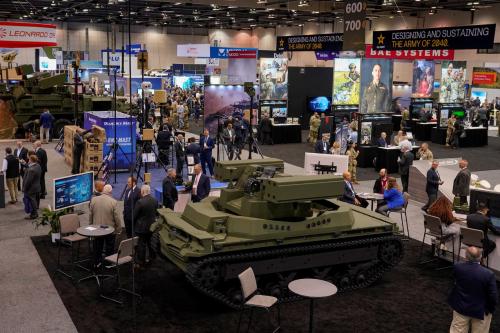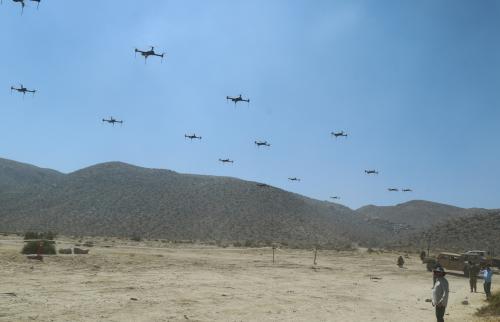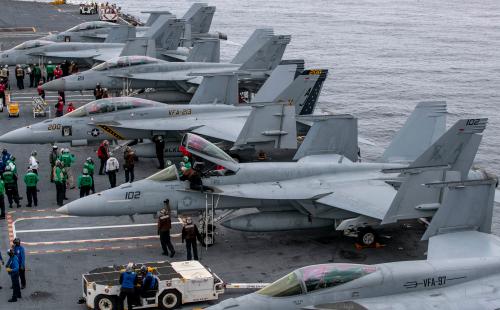An amazing revolution is taking place in the history of war, and even perhaps of humanity. The U.S. military went into Iraq with zero unmanned systems on the ground and just a handful of drones in the air, none of them armed. Today, there are more than 7,000 drones in the U.S. inventory and roughly 12,000 robots on the ground. And these are just the first generation, the Model T Fords compared with the smarter, more autonomous and more lethal machines already in the prototype stage. And we won’t be the only ones using them. Forty-two other countries have military robotics programs, as well as a host of nonstate actors.
But like any major change in war, the robot revolution is not turning out to be the frictionless triumph of technology that some would describe it. Unmanned systems are raising all sorts of questions about not only what is possible but also what is proper in politics, ethics, law and other fields. And these questions are rippling through all aspects of the military endeavor, well before we get to any world of machines making decisions on their own.
Take the challenges that surround the role of command. At the unit level, a colonel talked about how the new complications of commanding a team fighting remotely with unmanned systems proved even tougher than when he commanded a deployed unit. Indeed, the fact that many of the drone pilot units — who are “at war” over Iraq, but simultaneously “at home” in Nevada — have greater rates of combat stress and post-traumatic stress disorder than many units that are physically deployed, points to the darker side of this change in the 5,000-year-old human experience of “going to war.”
The ripple effects of robotics on leadership even affect the strategic level. Many have discussed the idea of “strategic corporals,” younger and younger troops who are being given greater and greater power and responsibility. But the rise of robots has created an opposite phenomenon — a dirty little secret that people in the service are somewhat afraid to talk about for risk of their own careers. I call it the rise of the tactical generals. Our technologies are making it easy, perhaps too easy, for leaders at the highest level of command not only to peer into, but even to take control of, the lowest-level operations. One four-star general, for example, talked about how he once spent a full two hours watching drone footage of an enemy target. He then personally decided what size bomb to drop on it. Similarly, a special operations forces captain talked about how a one-star, watching a raid on a terrorist hideout via a Predator, radioed in to tell him where to move not merely his unit in the midst of battle, but where to position an individual soldier.
The ability to watch and then reach into a battle in real time certainly helps commanders to become better informed and take personal responsibility for the decision made in combat. Indeed, who knows the “commander’s intent” better than the commanders themselves? But the line between timely intervention and micromanagement is a fine one, indeed. For instance, the four-star general can do the job of the captains, but those captains can’t do the same on the kind of big strategic issues that only a four-star general has the authority and experience to handle.
Leadership consequences
Even more, we have to ponder the long-term consequences. What happens when the young officers now being cut out of the chain, or micromanaged in the midst of battle, advance up the ranks, but without the experience of making the tough calls? This leadership issue is not just one for the troops, though.
Civilian agencies and political leaders alike now have a new ability to watch at the tactical level and even decide what should be done. Citing President Lyndon Johnson’s frequent attempts to influence the broader bombing campaign in Vietnam, a former service secretary worried that ultimately, “It’ll be like taking LBJ all the way down into the foxhole.”
We have to start wrestling with all the tough questions that are beginning to flow out from a world in which science fiction-like capabilities are being used in our very real and very human world. Fortunately, in looking at what seem like futuristic challenges, the lessons of the past remain solid guideposts. For example, on the issue of leadership, Gen. George Marshall, Army chief of staff during World War II, remains an apt model even for 21st century leaders. In his day, new inventions such as the radio and teletype gave him what certainly seemed like a nearly science fiction-like ability to instruct his officers from afar. Marshall’s approach, however, was to set the broad goals and agenda, have smart staff officers write up the details of the plan and ensure that everything remained simple enough that a lieutenant in the field could understand and carry out everything on his own.
Just as the bedrock values of good politics, ethics and law remain the same, regardless of the technology or century, so do the tenets of good leadership.



Commentary
Op-edThe Rise of the Tactical General
June 16, 2009